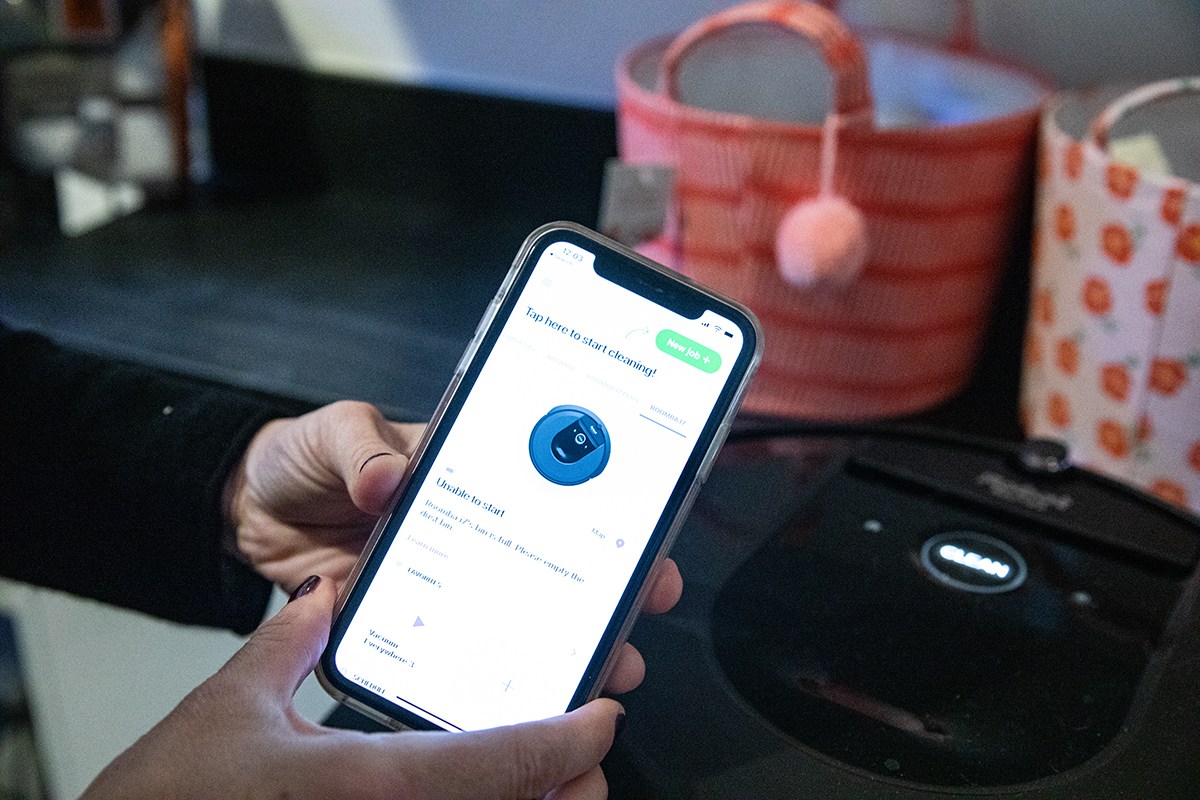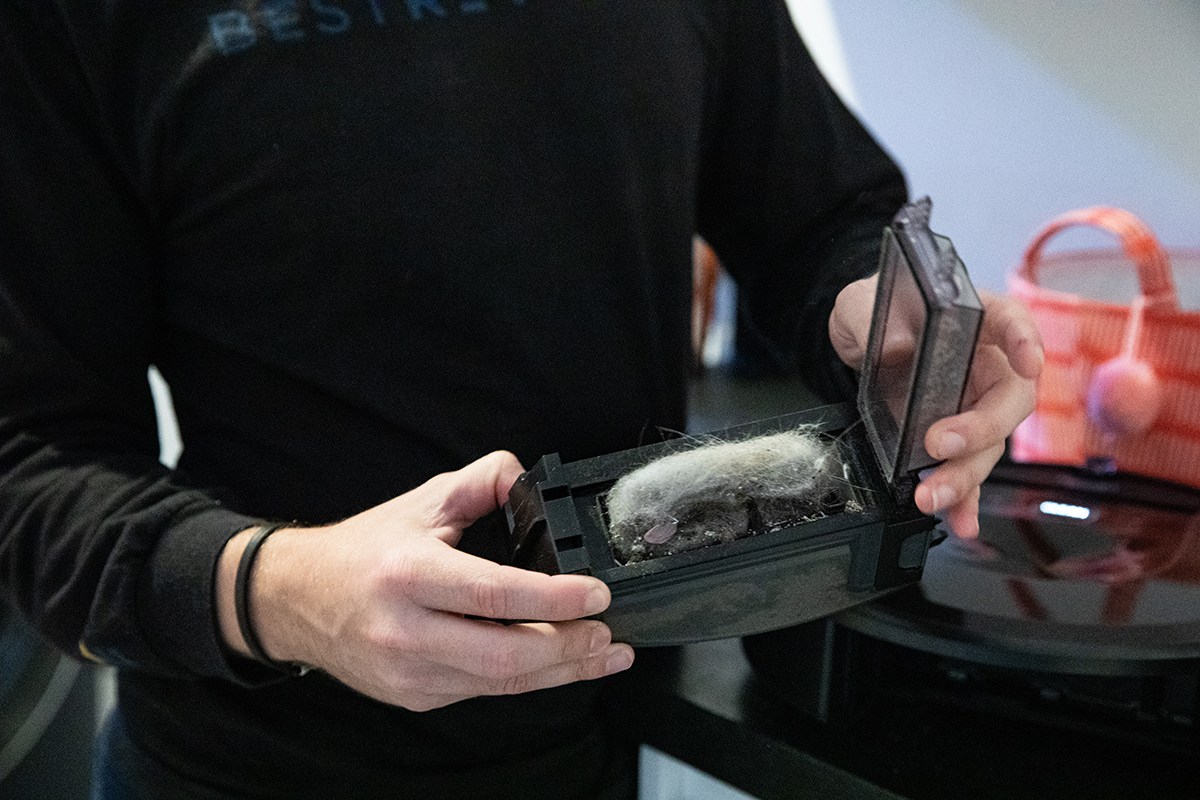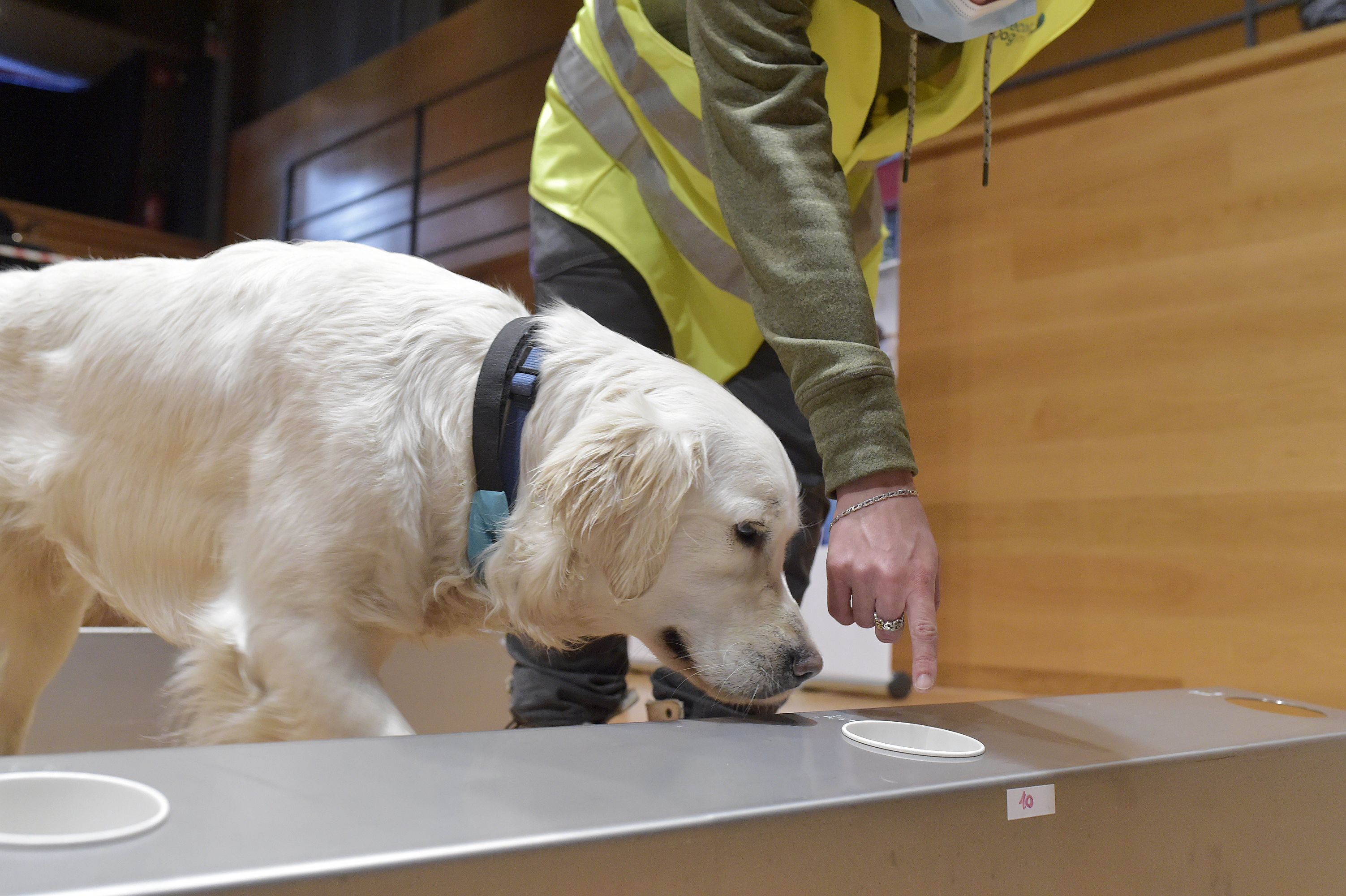Comparing the Roomba i3 EVO and i7 models
Vacuuming is no one’s favorite chore, but a robot vacuum does make it a whole lot easier. After more than two decades in business, iRobot, maker of the Roomba, has become synonymous with convenient, low-effort vacuuming, thanks to their impressive range of models. But if you’re trying to decide between the Roomba i3 EVO and the i7, there are some key differences to consider before choosing the best fit for your home.
We put the i3 EVO and i7 to the test in the BestReviews Testing Lab and found that both offer similar performance on most types of flooring as well as smart mapping of your home, which allows for more thorough cleaning. However, the i3 EVO beats the i7 on battery life and dustbin capacity as well as price (the i3 EVO is about $250 cheaper).
But the i7 is no slouch, either. It wins on navigation, thanks to its onboard camera, which gives it advanced capabilities and provides more opportunities to customize your cleaning. It also proved to have better suction power, making it ideal for homes with carpeting.
iRobot Roomba i3 EVO vs. iRobot Roomba i7 specs
When it comes to their performance on hard flooring, the Roomba i3 EVO and Roomba i7 are fairly similar. But small differences in a few key specs affect the overall user experience and ground they can cover.
iRobot Roomba i3 EVO specs
 The testing team is checking the dustbin on the iRobot Roomba i3 EVO
The testing team is checking the dustbin on the iRobot Roomba i3 EVO
Product specifications
Battery life: 96 minutes | Dimensions: 13.26” L x 13.26” W x 3.63” H | Dustbin capacity: 0.5 L | Weight: 7.44 lb | Mapping: Yes | Self-emptying: No | Voice commands: Alexa, Google Assistant and Siri | Scheduling: Yes
Released in 2020 as a new and improved Roomba i3 with better mapping features, the Roomba i3 EVO is similar in size to many other robot vacuums. Compared to the i7, which came out in 2018, it’s slightly narrower by less than a tenth of an inch, which won’t likely make too much of a difference in regard to maneuverability. It has a fairly average-sized dustbin among robot vacuums and is 0.2 liters larger than the i7’s dustbin. It also has a longer battery life, allowing it to clean for 20 minutes more than the i7. Unlike the i3+ EVO, this model isn’t self-emptying, so depending on the size of the space and how dirty it is, vacuuming may be interrupted when the bin is full.
Like many Roombas, the i3 EVO has smart-mapping capabilities that help it to learn your home and navigate the space more effectively. It identifies specific areas and rooms, so you can send the robot out for targeted cleaning by selecting a chosen room in the app’s drop-down menu when scheduling cleaning or sending the robot out for a one-off vacuuming run. Unlike some Roombas (including the i7), however, it doesn’t recognize Keep-Out Zones, which means you can’t prevent it from entering areas you don’t want it to clean.
The i3 EVO is compatible with voice commands through a home assistant, such as Alexa, Siri and Google Assistant. It also lets you set up scheduled cleaning sessions with the iRobot app. You can choose specific days and times for cleaning or set the robot to clean as soon as it detects you’ve left the house.
iRobot Roomba i7 specs
 The testing team is using the iRobot app to navigate the iRobot Roomba i7.
The testing team is using the iRobot app to navigate the iRobot Roomba i7.
Product specifications
Battery life: 75 minutes | Dimensions: 13.34” L x 13.34” W x 3.63” H | Dustbin capacity: 0.3 L | Weight: 7.44 lb | Mapping: Yes | Self-emptying: No | Voice commands: Alexa, Google Assistant and Siri | Scheduling: Yes
Though it’s about the same size as the i3 EVO, the Roomba i7 offers a battery life that’s about 20 minutes shorter. Additionally, its dustbin is approximately 40% smaller than the i3, which means it will likely need to be emptied more frequently during vacuuming to keep the robot cleaning, as it’s not a self-emptying model like the i7+.
Like the i3 EVO and many other robot vacuums, the i7 uses smart-mapping technology to learn your home’s floor plan. However, unlike the i3 EVO, it has an onboard camera for more advanced navigation. As a result, the i7 can clean specific rooms or zones on a vacuuming run and avoid certain areas using Keep-Out Zones. It is also compatible with Alexa, Siri and Google Assistant for voice commands, but its range of commands is more extensive than those offered by the i3 EVO and other entry-level robots. For example, in addition to telling the robot to start, pause or stop vacuuming, you can also ask the i7 to vacuum a specific room like the living room or clean near a certain object like under the kitchen table.
The i7 allows for scheduling in the iRobot app. You can set certain times each week or have the robot “sense” when you’re out (via location services or a connected device signal through the app) to begin vacuuming. Through the app, you can also choose cleaning preferences for your i7’s scheduled jobs, including the suction power and number of passes.
Design comparison
The i3 EVO and i7 both feature a classic round robot vacuum shape, but their appearance is slightly different. The i3 EVO features a two-tone gray design mainly composed of plastic. However, it also has a textured fabric-like ring around its top that definitely stood out for its stylish appearance during our testing. On the other hand, the i7 is made entirely of plastic and has a sleek black-and-gray design.
Both models have rubber rolls with enough flexibility to discourage hair from tangling around them. During testing, we found a small amount of easily removed hair around the i3’s brushes and little to no hair around the i7’s rollers. Both models also have plastic wheels that felt sturdy when we tested them. Additionally, the i3 EVO and i7 have a pop-out caster wheel at their front, which is extremely easy to remove if dirt or hair gets stuck around it.
Overall, the i3 EVO and i7 felt equally durable during testing. Because they’re mostly made of sturdy plastic, both models can take a pretty good beating without showing signs of wear and tear. However, we found that the i3 EVO’s textured fabric ring didn’t just give it a more distinctive look than the i7 — it also prevented the robot from showing fingerprints and dust as easily, so it seemed to stay cleaner during our testing.
Navigation comparison
While the i3 EVO and i7 both offer smart mapping, their navigational abilities differ fairly significantly. The i3 EVO maps a space using floor-tracking sensors on its bottom, while the i7 has an camera that provides more thorough, accurate mapping. The i3 EVO can only support a single smart map, while the i7 can recognize up to 10. That makes the i7 a better choice if you want to clean multiple floors of your home or move it between two locations, such as your home and office.
During our testing, we observed a clear difference in the robots’ performance based on these mapping capabilities. The i3 EVO and i7 both map specific rooms or zones, so we sent them out to clean in certain areas. This feature is highly convenient in homes with children and/or pets because the robot can go clean up a mess as soon as it happens.
However, the i7 learned specific rooms as well as objects, so we also sent it out to clean around certain objects, such as in front of the kitchen counter or under the dining table. Unlike the i3 EVO, the i7 also recognizes Keep-Out Zones, which proved a highly convenient feature. During testing, we were able to prevent it from going into areas that didn’t need cleaning or had obstacles that might cause it to get stuck. Overall, this led to more efficient vacuuming.
Neither model offers an obstacle-avoidance feature, so both had issues with objects in their path. The i7 got caught up on string-like items, including power cords and the fringe on a rug. The i3 EVO bumped into small objects in its way, such as a handbag, a shoe and a rubber dog toy, several times before it finally pivoted away from them.
Ultimately, the i7’s advanced navigation makes it the better choice for a cluttered or busy home where you might want to prevent the robot from entering certain areas. For example, the Keep-Out Zone feature can prevent the vacuum from going into a playroom where children’s toys might be scattered on the floor or into the space where your pets’ food and water bowls are located. The i3 EVO still offers strong navigation skills, but it would work best in a home that doesn’t have any real no-go areas.
Features comparison
If you want to ensure your floors get the deepest clean possible, both the Roomba i3 EVO and i7 feature dirt-detect technology, which uses sensors on their underside to detect dirt and debris. These sensors alert the robots when there is a higher concentration of dirt in a given area, so it knows to work harder in those spots. They will continue to clean those areas until the sensors identify fewer debris particles.
During testing, we observed the smart maps for the i3 EVO and i7 after they went out for vacuuming runs. Both models indicated areas on their map where heavier dirt was detected with dark green triangles, so we could see where the dirt-detect technology was triggered. We didn’t observe any noticeable debris in those spots afterward, indicating that the robots had successfully cleaned those dirtier areas.
The Roomba i3 EVO and i7 also work with voice commands when paired with a home assistant like Alexa or Google Assistant. During testing, we used voice control to send the robots out to clean, and both models responded within seconds.
However, the available commands for the i3 EVO are fairly basic. We tested prompts like “start vacuuming,” “pause vacuuming,” “resume vacuuming” and “return to Home Base,” and all worked well. The i7 offers a broader range of voice commands, so we asked it to clean specific rooms like the living room and around certain objects like under the dining table for targeted cleaning. These additional commands can come in handy in a home with children or pets because you can simply command the robot to clean up messes as they happen.
 Neither the Roomba i3 EVO nor i7 are self-emptying. If you want a model that empties itself, you’ll need to upgrade to the i3+ EVO or i7+.
Neither the Roomba i3 EVO nor i7 are self-emptying. If you want a model that empties itself, you’ll need to upgrade to the i3+ EVO or i7+.
Suction comparison
During testing, we found that the Roomba i3 EVO and i7 both performed well on hard flooring, including hardwood and tile. Like many robot vacuums, these models sometimes blew particles out of the path, which required a second pass to capture. Overall, though, they removed nearly all visible debris on hard flooring.
However, our testing found that the i7 offered better suction power when it came to carpeting. We only ran into one issue with it on carpeting — it sometimes got caught on the tasseled edge of a rug. Otherwise, it thoroughly cleaned all carpeted surfaces.
On the other hand, the i3 EVO struggled slightly on carpeting. It left behind a few visible particles of coarse kosher salt and some pieces of pet hair from a larger clump we’d placed in its path. It picked up kitty litter more effectively but also had trouble capturing cereal. It actually crushed a couple of pieces and ground the crumbs into the carpet without removing all the debris, making it the less effective option of the two.
Price
The iRobot Roomba i3 EVO typically retails for $349.99 and can be found at Amazon. The iRobot Roomba i7 usually costs $600 and is available at Amazon. Note that iRobot now only makes the self-emptying versions of these models: the Roomba 3+ EVO and Roomba i7+.
Bottom line
The Roomba i3 EVO and i7 offer many similar features, but their performance differs quite a bit on carpeting. Because of its superior suction power and advanced navigation capabilities, we give the i7 the overall edge. Its performance on carpet and Keep-Out Zones feature make it an excellent choice for a home with small children or pets because you can clean up crumbs and pet hair easily and prevent the robot from going into areas where they might get stuck on toys or bump into pet bowls.
The i3 EVO is still worth consideration, though. It has a longer-running battery and a bigger dustbin, so we recommend it for larger homes with more space to clean. It’s also more affordable than the i7, making it a perfect option if you’re on a budget.
Want to shop the best products at the best prices? Check out Daily Deals from BestReviews.
Sign up here to receive the BestReviews weekly newsletter for useful advice on new products and noteworthy deals.
Jennifer Blair writes for BestReviews. BestReviews has helped millions of consumers simplify their purchasing decisions, saving them time and money.
Copyright 2023 BestReviews, a Nexstar company. All rights reserved.


























